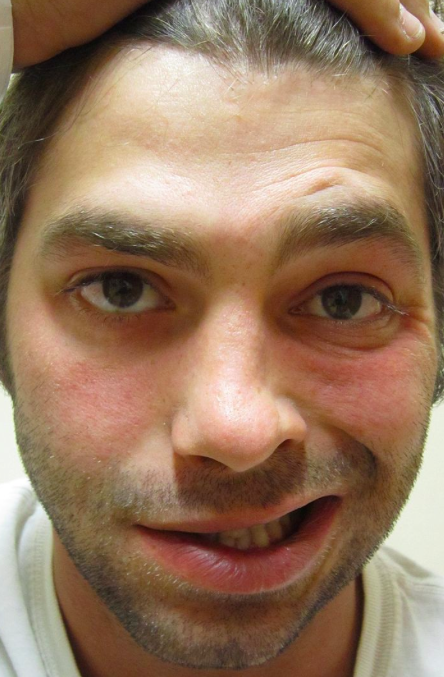Visit and Join the WeHeal Bell’s Palsy Community
For more information, see: NIH | Wikipedia

Bell’s palsy is a form of temporary facial paralysis resulting from damage or trauma to one of the facial nerves. It is the most common cause of facial paralysis. Generally, Bell’s palsy affects only one of the paired facial nerves and one side of the face, however, in rare cases, it can affect both sides. Symptoms of Bell’s palsy usually begin suddenly and reach their peak within 48 hours. Symptoms vary from person to person and can range in severity from mild weakness to total paralysis. These symptoms include twitching, weakness, or paralysis, drooping eyelid or corner of the mouth, drooling, dry eye or mouth, impairment of taste, and excessive tearing in the eye. Bell’s palsy often causes significant facial distortion. Most scientists believe that a viral infection such as viral meningitis or the common cold sore virus — herpes simplex– can cause the disorder when the facial nerve swells and becomes inflamed in reaction to the infection.
Is there any treatment?
Recent studies have shown that steroids such as prednisone — used to reduce inflammation and swelling — are an effective treatment for Bell’s palsy. Other drugs such as acyclovir — used to fight viral herpes infections — may also have some benefit in shortening the course of the disease. Analgesics such as aspirin, acetaminophen, or ibuprofen may relieve pain. Because of possible drug interactions, individuals should always talk to their doctors before taking any over-the-counter medicines. Keeping the eye moist and protecting it from debris and injury, especially at night, is important. Other therapies such as physical therapy, facial massage or acupuncture may provide a potential small improvement in facial nerve function and pain..
What is the prognosis?
The prognosis for individuals with Bell’s palsy is generally very good. The extent of nerve damage determines the extent of recovery. With or without treatment, most individuals begin to get better within 2 weeks after the initial onset of symptoms and recover completely within 3 to 6 months.
What research is being done?
The National Institute of Neurological Disorders and Stroke (NINDS) conducts and supports an extensive research program of basic science to increase understanding of how the nervous system works and what causes the system to sometimes go awry, leading to dysfunction. Part of this research program focuses on learning more about the circumstances that lead to nerve damage and the conditions that cause injuries and damage to nerves. Knowledge gained from this research may help scientists find the definitive cause of Bell’s palsy, leading to the discovery of new effective treatments for the disorder. Other NINDS-supported research is aimed at developing methods to repair damaged nerves and restore full use and strength to injured areas, and finding ways to prevent nerve damage and injuries from occurring.
NIH Patient Recruitment for Bell’s Palsy Clinical Trials
At NIH Clinical Center
Throughout the U.S. and Worldwide
NINDS Clinical Trials
Organizations
Visit and Join the WeHeal Bell’s Palsy Community
For more information, see: NIH | Wikipedia
WeHeal is very grateful to our valued sources of information which include Wikipedia, WebMD, ClinicalTrials.gov, Cancer.gov, Infoplease, and the US CDC (Center for Disease Control).